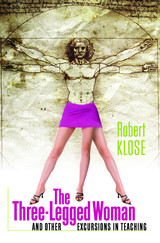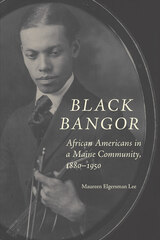2 books about Bangor

Robert Klose
University Press of New England
Since 1986, Robert Klose has taught biology at a “small, impoverished, careworn” college in central Maine. Located on a former military base, the school became first the South Campus of the University of Maine, or SCUM, and later, Penobscot Valley Community College, then Bangor Community College, and most recently University College of Bangor. Despite its improved nomenclature, University College of Bangor remains an open-admissions environment at which “one never knows what’s going to come in over the transom.” Klose’s nontraditional students have included, in addition to single parents and veterans, the homeless, the abused, ex-cons, and even a murderer (who was otherwise “a very nice person”). Chronicling his experiences teaching these diverse students, Klose describes with equal doses of care and wry wit those who are profoundly unfit for college, their often inadequate command of the lingua franca, and the alacrity with which they seize upon the paranormal (the three-legged woman) while expressing skepticism about mainstream science. He reflects on the decline of reading for enjoyment and the folly of regarding email as a praiseworthy substitute for expository writing. He details what works in the classroom, identifies what has failed, and relates stories of the absurd, the sublime, and the unanticipated, such as one student’s outburst following a discussion of evolution: “For what you have taught today you shall be damned to everlasting fires of hell!” Tempering thoughtfulness with a light touch and plenty of humor, these essays prove that teaching, an “imperfect occupation,” remains a “special profession.”
[more]

Black Bangor
African Americans in a Maine Community, 1880-1950
Maureen Lee
University of New Hampshire Press, 2005
Blacks have lived and worked in Maine as early as the seventeenth century, but historically have constituted less than one percent of Maine's population. Probably for this reason, books on Blacks in New England have largely ignored the experience of African American Mainers. Black Bangor is the first major published study of a Black community in Maine.
This tightly woven case study examines the African American community in Bangor during its heyday, 1880–1950, the period that saw an unprecedented migration of Blacks to that city. Blacks migrated to Bangor not just from other New England states, but from the Caribbean and Canadian Maritime Provinces as well, creating a heterogeneous community with roots in two hemispheres. Constituting an "ultraminority" in Bangor (according to the census, Blacks never numbered more than 300 souls during this period), this diverse community nonetheless came together to establish an impressive range of institutions, including local chapters of the NAACP and Odd Fellows, as well as of Mothers and Junior Mothers Clubs. Concentrated in an area known as the Parker Street neighborhood, Black women in Bangor became domestics and cooks, caterers and beauticians, clerks and stenographers. Men worked as loggers, teamsters, porters, chefs, and barbers; a few owned businesses.
Organized thematically, with sections on migration, labor, daily life, and community, Black Bangor's topics include not just migration patterns, work, and religious and cultural organizations, but also African American homes, furniture, clothing, and foodways. Elgersman Lee also examines race relations and depictions of Blacks in the local media, and draws comparisons between the experiences of Bangor's African American population and those of Blacks in other New England cities.
This fascinating and exhaustive study will appeal to anyone from Maine, as well as those interested in African American history and the rich texture of the region's cultural life.
This tightly woven case study examines the African American community in Bangor during its heyday, 1880–1950, the period that saw an unprecedented migration of Blacks to that city. Blacks migrated to Bangor not just from other New England states, but from the Caribbean and Canadian Maritime Provinces as well, creating a heterogeneous community with roots in two hemispheres. Constituting an "ultraminority" in Bangor (according to the census, Blacks never numbered more than 300 souls during this period), this diverse community nonetheless came together to establish an impressive range of institutions, including local chapters of the NAACP and Odd Fellows, as well as of Mothers and Junior Mothers Clubs. Concentrated in an area known as the Parker Street neighborhood, Black women in Bangor became domestics and cooks, caterers and beauticians, clerks and stenographers. Men worked as loggers, teamsters, porters, chefs, and barbers; a few owned businesses.
Organized thematically, with sections on migration, labor, daily life, and community, Black Bangor's topics include not just migration patterns, work, and religious and cultural organizations, but also African American homes, furniture, clothing, and foodways. Elgersman Lee also examines race relations and depictions of Blacks in the local media, and draws comparisons between the experiences of Bangor's African American population and those of Blacks in other New England cities.
This fascinating and exhaustive study will appeal to anyone from Maine, as well as those interested in African American history and the rich texture of the region's cultural life.
[more]
READERS
Browse our collection.
PUBLISHERS
See BiblioVault's publisher services.
STUDENT SERVICES
Files for college accessibility offices.
UChicago Accessibility Resources
home | accessibility | search | about | contact us
BiblioVault ® 2001 - 2024
The University of Chicago Press









